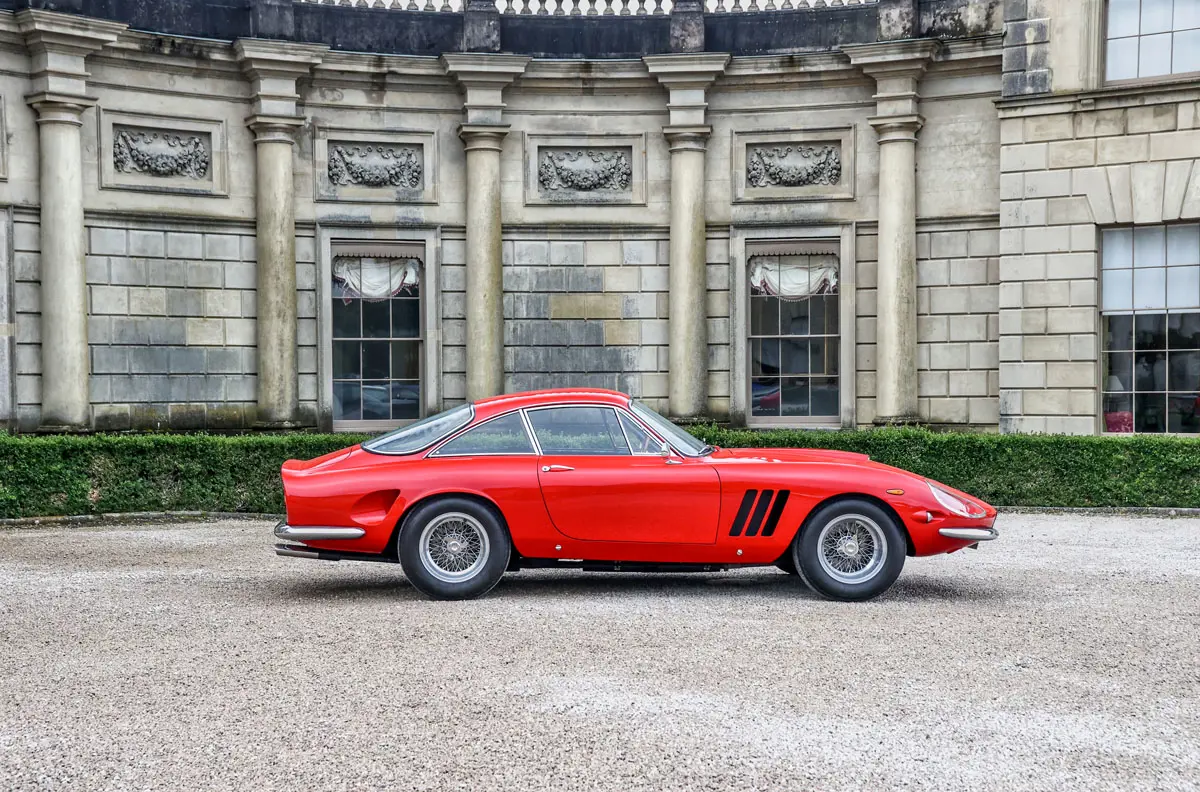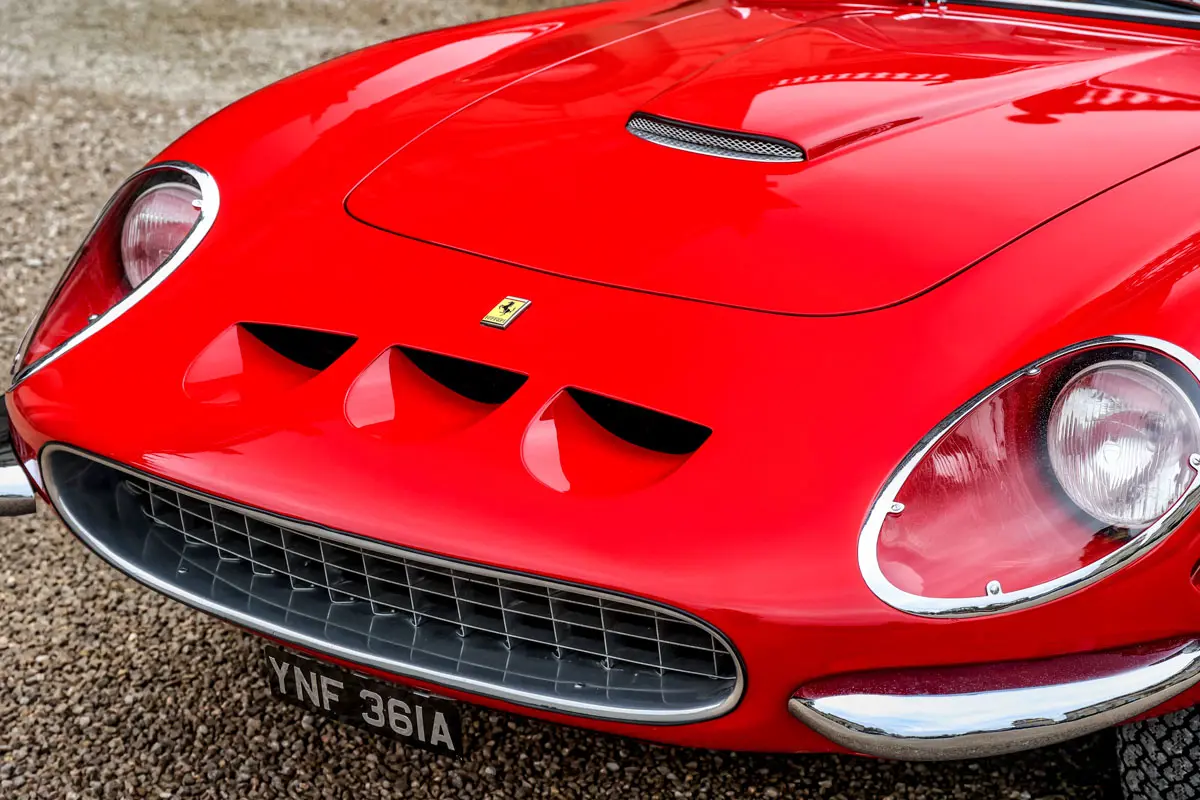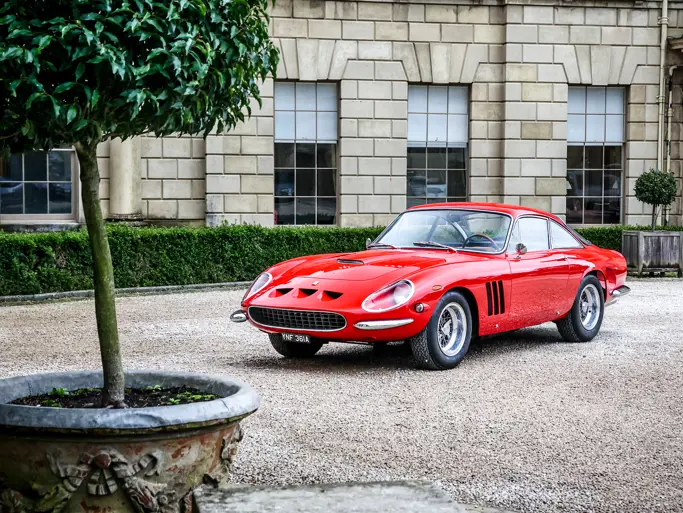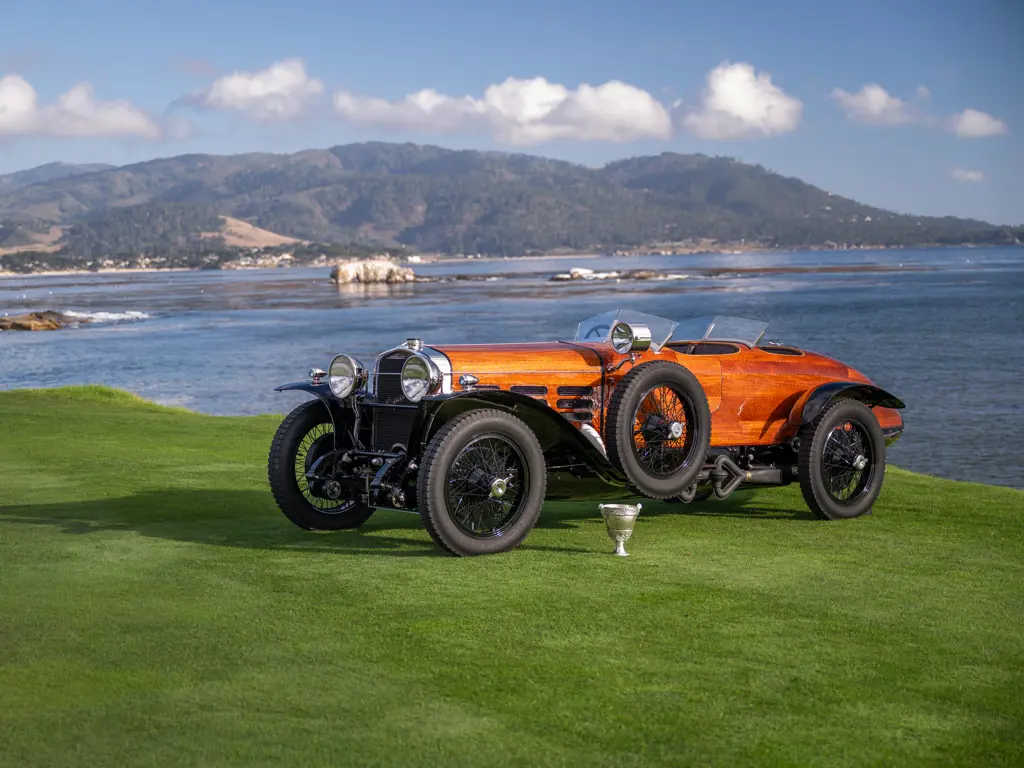The adage that form follows function is rarely more apt than when talking about Ferrari. Enzo was obsessed with competition from the earliest days, beginning his career as a racer himself before discovering an even greater talent for running the race teams of others, most notably Alfa Romeo. When he eventually struck out on his own, his cars possessed that same singular purpose: to win at all costs. Ferrari’s most attractive creations, among them the famed ‘Pontoon-Fender’ 250 Testa Rossa, were pretty in a way dictated by engineers rather than stylists, the draughtsman’s pen owing more to aerodynamic efficiency than the spark of inspiration. True beauty seemed often to evade Maranello, whose cars existed for a purpose far beyond their kerb appeal. Even the great 250 GTO, now and forever the most desirable car to wear a Prancing Horse badge, is appealing as much for its performance as its flowing lines. It wasn’t until the arrival of the Lusso in 1962 that the 250 series truly hit the highest notes in terms of styling and design.

The 250 GT/L Berlinetta, as the Lusso was officially known, was the final iteration of the 250 GT line and came about to fill the void left by two other hugely significant models, the 250 GT SWB and the 250 GTE 2+2. A strict two-seater, the Lusso combined the refinement of the GTE with the performance of the short wheelbase, providing an intoxicating blend of each car’s strengths. At its heart lay a single overhead-cam variant of Gioacchino Colombo’s famed 3-litre V-12 engine that developed 240 horsepower at a dizzying 7,500 rpm and was capable of propelling the car to 60 mph in less than eight seconds. The car’s specification didn’t fall too far short of the famed 250 GTO—down to the strikingly similar tube-frame chassis—and it proved popular with real drivers, among them Steve McQueen. The Lusso was never intended to go racing, but that didn’t stop customers from entering their cars in several events, and in the early 1960s the model made a good showing at both the Targa Florio and Tour de France.

For all its gifts, the Lusso’s most striking feature was its flowing design. Like other roadgoing Ferraris of the period, the Lusso was bodied in Modena by Sergio Scaglietti’s eponymous concern, but the styling of the car was trusted to Ferrari’s long-term design partner, Pininfarina. The final study incorporated a number of features from Ferrari’s back catalogue, but also several key points that set it apart from its stablemates—most notably an integrated rear spoiler and a truncated “Kamm” tail. The result was one of the most elegant and appealing Ferraris ever built—a masterpiece of perfect proportions that has, since its unveiling in 1962, ranked among the most beautiful cars ever made.

For many, the Ferrari 250 GT/L Berlinetta Lusso is approaching design perfection, but on a handful of occasions, some owners were tempted to tweak the recipe. One such character was Luciano Pederzani, co-founder of the Tecno Racing Team and an early proponent of the new model. Pederzani took delivery of his car, chassis 4383, on 9 April 1963. An early example, it was just the 16th of its type to leave Maranello and was smartly finished in Grigio Argento over a Nero Connolly interior, setting its new owner back more than 5,750,000 Lire.
Pederzani made the most of his new car and was regularly seen blasting around the poplar-lined roads of Bologna. Two years after acquiring the Ferrari it was fitted with a replacement engine from a later Lusso, and a short time later the decision was made to modify the car’s celebrated appearance—no small decision given the esteem in which the car was held.
Medardo Fantuzzi was the man charged with the daring rebody, and while he was already responsible for Tecno’s on-track creations, the Bolognese native was also no stranger to Ferrari. Fantuzzi was the man who built the outrageous 250 Testa Rossa Spyder in 1961, a stunning aerodynamic take on the legendary sports car that featured front grille vents aping the ‘sharknose’ 156 grand prix racers. Unconventionally beautiful, the Testa Rossa was a triumph of design and among the first cars to feature a rear spoiler. Fantuzzi also designed the one-off coachwork for a spectacular 1964 Ferrari 330 LM that was converted to spider configuration—the “Golden Ferrari” that starred alongside Terence Stamp in Federico Fellini’s Spirits of the Dead.

His work on Pederzani’s Lusso was inspired but more restrained, with an elegant, elongated nose punctuated by racy faired-in headlamps that were set back further into the wings. It was a look reminiscent of the one-off London show car, Lusso chassis 4335GT, but was even more streamlined and neat thanks to revised twin bumperettes and a smaller, narrower grille opening. The standard Lusso was beautiful, but the new Fantuzzi bodywork took the car to another level of modernity and style—it looked as if it had rolled straight off the Geneva show stand.

Three years after its modifications Pederzani sold the Lusso and it was promptly shipped to New York City. It changed hands after five years, and in 1976 its unique body would be further enhanced, this time by an owner in Texas. The broad strokes of the Fantuzzi body remained as elegant and svelte as ever, but its owner clearly had an eye for competition. He commissioned a number of subtle changes in a nod to the 250 GTO, including triple bonnet intakes and vents behind the rear wheels—the latter, somewhat ironically, features that were included on Fantuzzi’s “Golden Ferrari.” The revisions were concluded with a full repaint in Ferrari’s iconic racing colours, which further reinforced the family connection with the famed Gran Turismo Omologato.

The finished article is, without doubt, one of the most striking roadgoing Ferraris of the 1960s, its cohesion all the more surprising when you consider that it was the product of two men’s visions—or three if you also include the original Pininfarina design. The GTO design language would have looked incongruous on a standard Lusso, but combined with the lengthened nose created by Fantuzzi, the competition-inspired elements truly come to life. Both elegant and sporting, this unique Lusso has a look unlike anything else of the period, and while a standard car comes close to the performance of the hallowed 250 GTO, this example’s incredible styling bridges the gap yet further. If ever there was a more affordable alternative to Ferrari’s most coveted motorcar, this remarkable one-off Lusso—bodied in period by one of Maranello’s great collaborators—is surely it.




